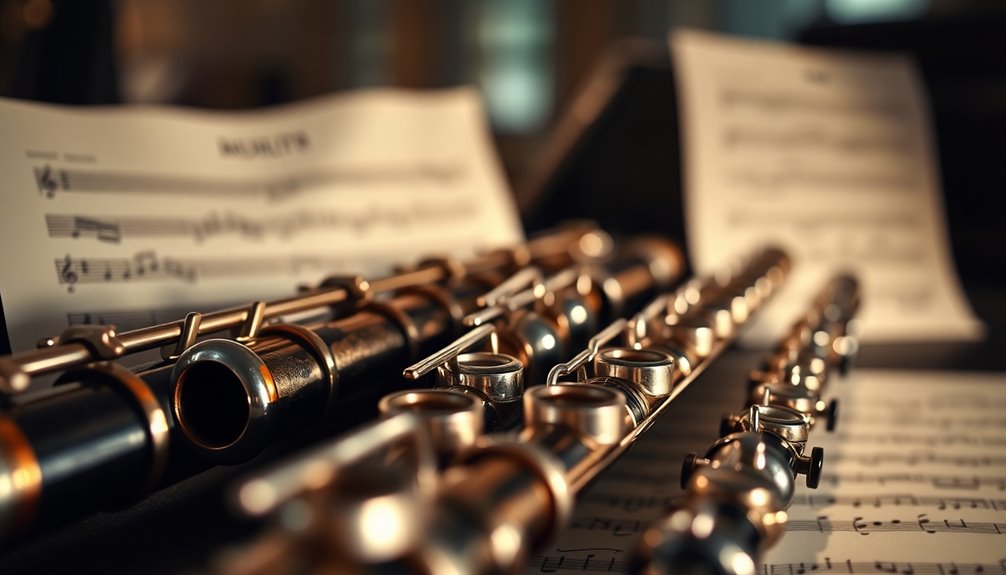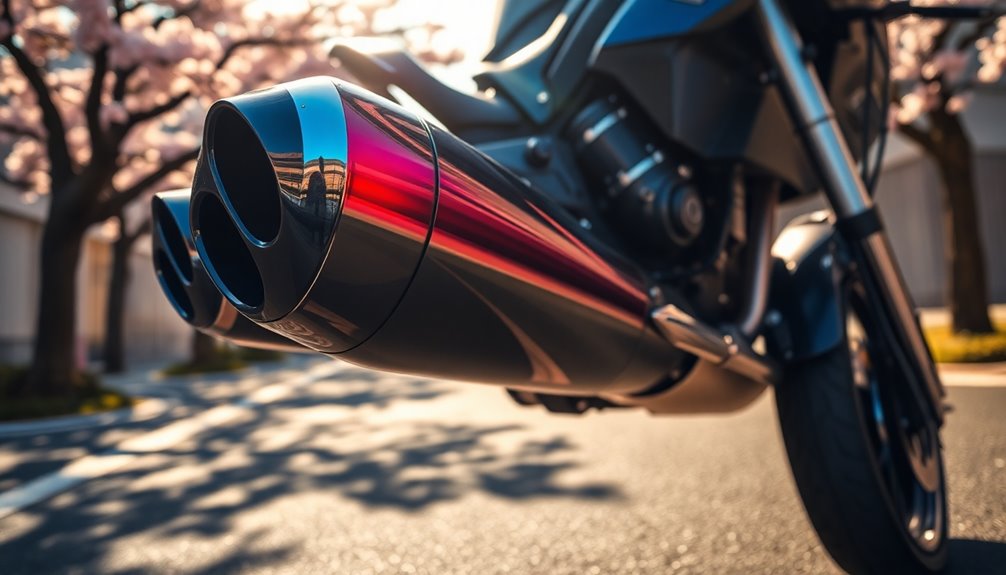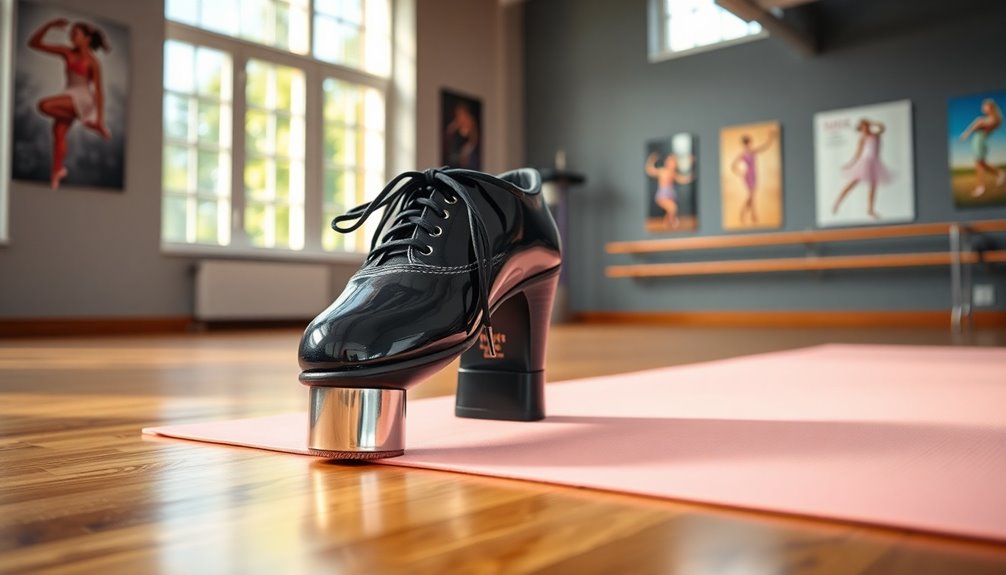To protect your music experience, steer clear of low-quality flute brands like Glory, Eastar, Aisiweier, and Vangoa. These brands often use inferior materials and lack proper craftsmanship, resulting in poor sound and playability. Instruments under $300 are typically unreliable, and you might end up frustrated with tuning difficulties and mechanical issues. Instead, consider investing in reputable brands like Yamaha or Pearl for better performance and longevity. Paying attention to brand reputation and customer support can make a big difference. If you're looking for more tips on selecting a quality flute, there's more to uncover.
Key Takeaways
- Avoid brands like Glory and Eastar, known for poor sound quality and build issues that compromise performance.
- Steer clear of Aisiweier due to frequent tuning difficulties reported by users.
- Vangoa offers inflated value through unnecessary accessories, detracting from the instrument's quality.
- Instruments priced under $300 often lack reliability, making them unsuitable for serious musicians.
- Prioritize reputable brands such as Yamaha and Pearl for better craftsmanship and sound quality.
Understanding Flute Quality
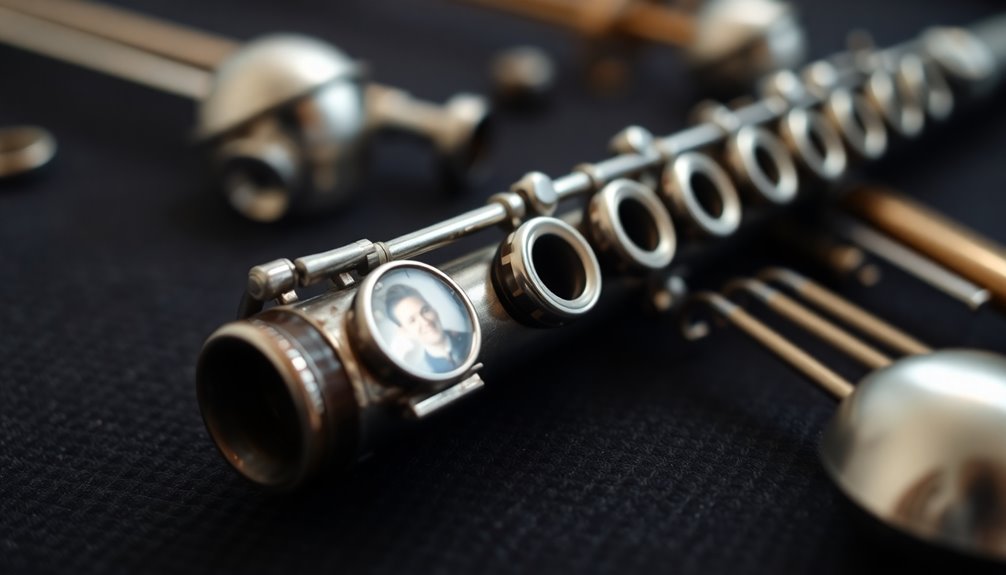
When you're evaluating flute quality, it's essential to take into account both the materials and craftsmanship involved. High-quality flutes are typically crafted from silver or gold, which enhance durability and produce a richer flute sound. In contrast, poor quality instruments often use cupronickel, leading to inferior sound and a compromised playing experience.
The design of keywork and tone holes also greatly impacts playability. Well-crafted flutes offer better responsiveness and intonation, making them more enjoyable for flute players. Conversely, student flutes priced under $300 or $500 usually exhibit low-quality craftsmanship, which can hinder your progress and learning.
You should be aware of the potential issues with unreliable mechanisms in cheaper instruments. Brands like Glory, Eastar, and Aisiweier frequently receive negative reviews for sound quality and durability.
Regular maintenance and inspection of your flute are essential, regardless of its quality. Even high-quality flutes can suffer if neglected over time. By understanding flute quality, you can make informed decisions, ensuring you invest in an instrument that enhances your musical journey rather than holding you back.
Brands and Models to Avoid
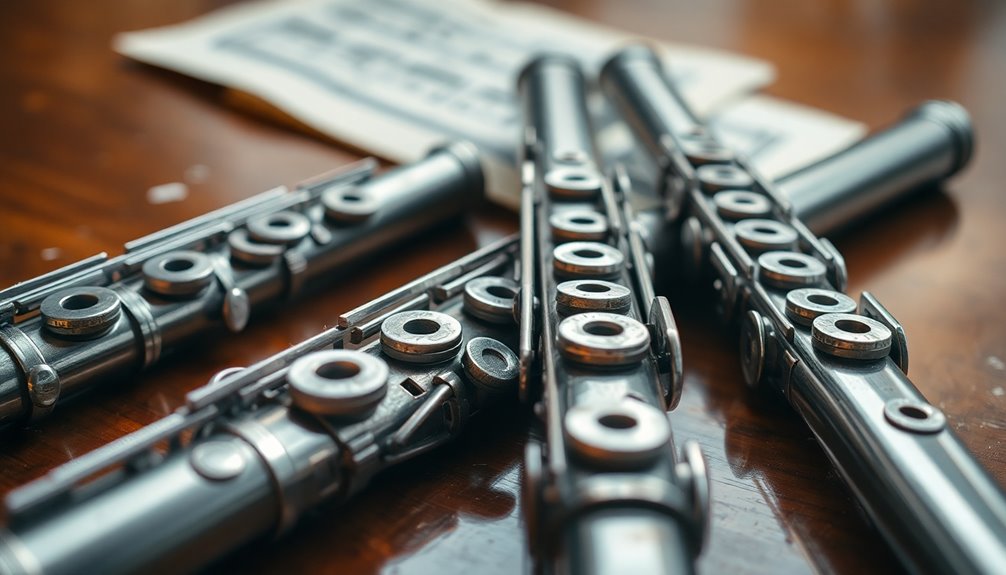
Identifying brands and models to avoid is essential for any aspiring flutist. Choosing the wrong flute can hinder your progress and enjoyment, especially if you're a student aiming for quality performance. Here's a quick reference to some brands and models you should steer clear of:
| Brand | Reasons to Avoid |
|---|---|
| Glory | Poor build quality and sound performance |
| Eastar | Low-end materials, like cupronickel |
| Aisiweier | Significant tuning difficulties |
| Vangoa | Inflated value due to unnecessary accessories |
Instruments priced under $300 often indicate lower reliability, making them unsuitable for serious musicians. Brands like Cecilio and Vangoa include flashy accessories that don't enhance playability. Instead, they distract from the essential qualities you need in a flute. Be cautious of unusual colors and marketing jargon, as these can signal lower-quality options. Ultimately, investing in a reliable flute will enhance your musical experience and help you develop as a flutist. Avoiding these brands guarantees you focus on your performance without the frustration of poor tuning and build quality.
Practical Buying Guidance
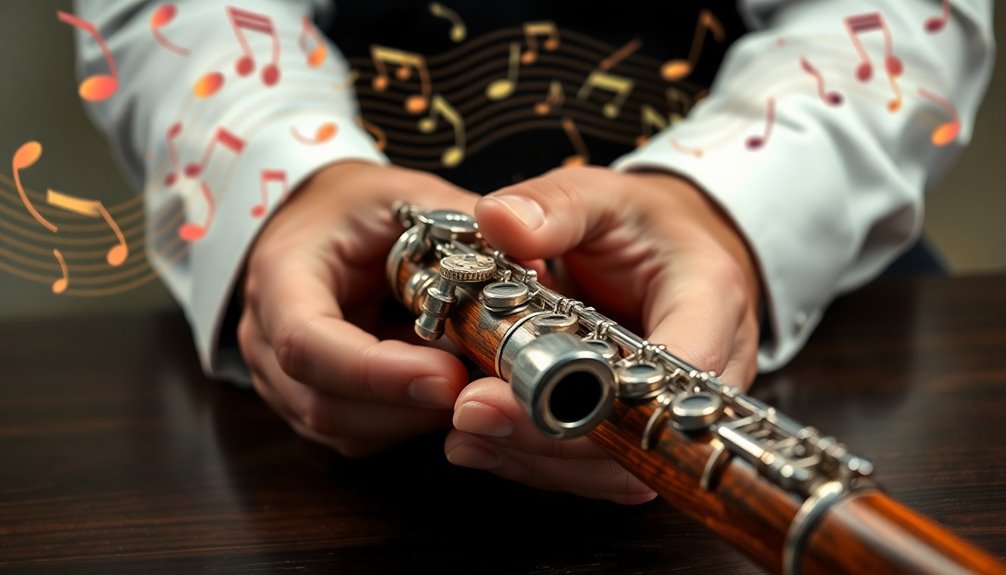
When you're looking to buy a flute, it's vital to focus on trusted brands like Yamaha and Pearl, as they offer reliable options for beginners.
Keep in mind essential factors such as price and reviews, since cheaper models can lead to frustration down the line.
Trusted Brands Overview
Choosing a flute from a trusted brand can make all the difference in your playing experience. Brands like Yamaha, Pearl, and DiMedici/Jupiter are well-regarded for their reliability and exceptional sound quality.
When you invest in a flute from these reputable brands, you're more likely to enjoy a lasting instrument that enhances your musical journey.
On the other hand, be cautious with entry-level flutes from brands like Glory, Eastar, and Aisiweier. These instruments often use inferior materials that compromise both sound quality and durability, leading to low-quality performance.
Flutes priced under $300 typically fall into this category and should be approached with skepticism.
Additionally, watch out for misleading marketing tactics that promote unnecessary accessories to inflate perceived value without improving playability.
Always look for quality indicators, such as availability in reputable shops and accurate descriptions, as these can help you discern quality.
Essential Buying Considerations
Investing in a flute requires careful consideration to guarantee you find an instrument that meets your needs. Start by prioritizing trusted brands like Yamaha and Pearl, which provide reliable models that enhance sound quality and playability.
It's vital to avoid cheap flutes priced under $300, as they often lack durability and can hinder your progress as a serious player.
Before making a purchase, research the seller's reputation and look for customer feedback. Low-price deals might seem tempting but could indicate subpar instruments.
Testing multiple flutes is essential to assess their sound quality and playability, as personal preference plays a significant role in your choice.
Additionally, remember that regular maintenance and servicing are necessary for all flutes, which can add to your total cost of ownership. Factor this into your budget when selecting an instrument.
Common Pitfalls in Flute Selection
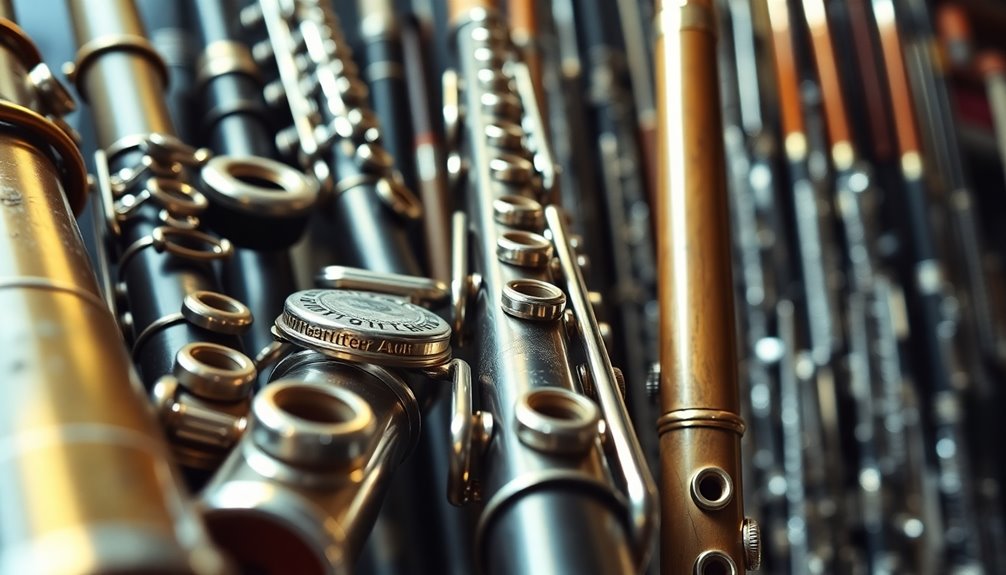
In the quest for the perfect flute, many musicians fall into the trap of selecting low-cost brands that seem appealing at first glance. Unfortunately, brands like Glory and Eastar often use inferior materials, resulting in poor quality and disappointing sound. When you're serious about your study or performance, instruments under $300 typically lack the durability and reliability needed for growth.
Misleading marketing practices can also lead you astray. Exaggerated claims about sound quality and features may entice you, but they often mask significant issues like poor intonation and stiff key mechanisms that hinder playability.
These subpar flutes mightn't include essential features like a split-E mechanism, making your learning experience frustrating.
To avoid these pitfalls, always opt for reputable shops where you can receive expert guidance. Steer clear of flashy colors or enticing descriptions that don't reflect the instrument's true capabilities.
Research and Purchase Strategies
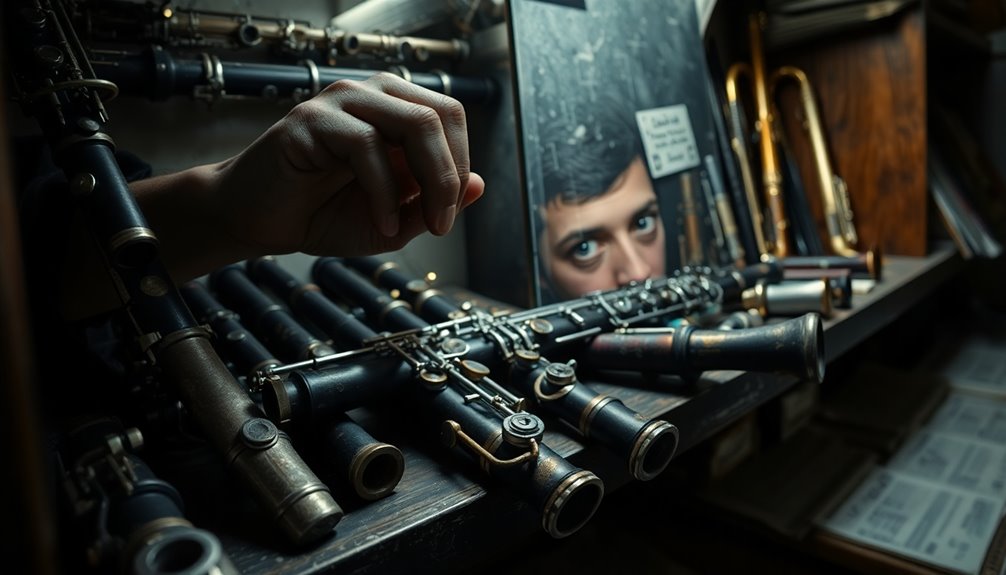
Steering through the world of flute purchases requires a strategic approach to confirm you select a quality instrument that meets your needs. To make informed decisions, consider these tips:
- Research brands and models thoroughly
- Check for availability in reputable music shops
- Familiarize yourself with flute terminology
Start by researching flute brands and reading reviews to spot any red flags, particularly concerning subpar materials. If you see flutes priced unusually low, tread carefully; they often signal poor craftsmanship. Aim for instruments above $300 for reliability.
Equally important is where you shop. Reputable music shops usually carry quality instruments, while online-only or discount retailers mightn't meet your expectations. Before committing, investigate any return policies that allow you to test the flute at home. This safety net confirms you can avoid a flute that doesn't perform as anticipated.
Finally, understanding flute terminology and specifications is essential. Misleading descriptions can lead you to instruments that won't suit your needs.
Importance of Professional Assessment
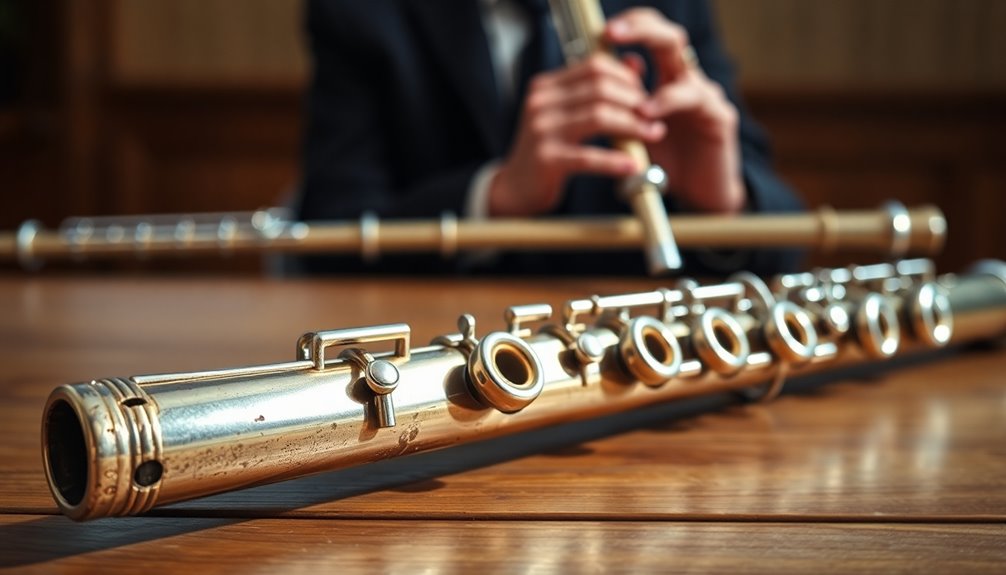
A professional assessment is vital when you're buying a flute, as even identical models can vary greatly in quality and playability. Engaging a flute technician for an evaluation can help identify issues like stiff footjoints or leaks that casual inspections might miss. This is important because the durability and sound quality of your instrument can greatly influence your experience while playing flute.
Testing multiple flutes—typically between 5 to 20—allows you to find the one that suits your preferences and playing style. It's also a good idea to involve a knowledgeable flute teacher in the selection process. Their insights can guide you toward instruments made from quality materials that meet your skill level and goals.
Many respected flute brands require a professional evaluation to guarantee their instruments stand the test of time. By prioritizing a professional assessment, you can avoid potential pitfalls and steer clear of flute brands to avoid.
Ultimately, this process guarantees you invest in a flute that not only enhances your music experience but also supports your growth as a player.
Frequently Asked Questions
What Are Flute Brands to Avoid?
When you're choosing a flute, it's wise to steer clear of brands like Glory, Eastar, and Jody Blues, known for their poor sound and build quality.
Instruments from Cecilio and Vangoa often use less durable materials, which can shorten their lifespan.
Additionally, low-cost options under $300, like Aisiweier and Ebriche, frequently face tuning issues.
Always prioritize reputable manufacturers to guarantee you get a reliable and enjoyable playing experience.
What Is the Best Brand for a Flute?
When you're searching for the best flute brand, consider Yamaha and Azumi.
Yamaha offers models like the 600 series, which are perfect for students and intermediate players due to their outstanding sound quality and durability.
Azumi, especially the 2000RBO and 3000, is known for its craftsmanship and tonal richness, appealing to advancing players.
Investing in one of these brands can truly elevate your playing experience and guarantee you have a reliable instrument.
How Can You Tell if a Flute Is Good Quality?
To tell if a flute is good quality, check the materials; solid silver or nickel-silver is preferable over cheaper options like cupronickel.
Look for well-crafted tone holes and smooth key mechanisms, as these enhance playability.
Avoid flutes with flashy colors or gimmicky features, since they often signal lower quality.
Finally, read customer reviews and ask experienced flutists for recommendations to guarantee you're making a reliable choice for your music journey.
How Many Years Should a Flute Last?
You'd think a flute should last forever, right? Well, it doesn't quite work that way.
A well-made flute can last 20 to 30 years with proper care, while student flutes might only survive 5 to 10 years.
Regular maintenance is key; replacing pads and making adjustments can greatly extend its lifespan.
Conclusion
In your journey to find the perfect flute, think of it like choosing a paintbrush for a masterpiece. Just as an artist wouldn't settle for a worn-out brush, you shouldn't compromise on quality. Avoiding certain brands can save you from frustration and guarantee your music resonates beautifully. Remember, investing in a reliable flute not only enhances your experience but also nurtures your passion. Trust your instincts and seek professional advice—you deserve an instrument that elevates your art.
